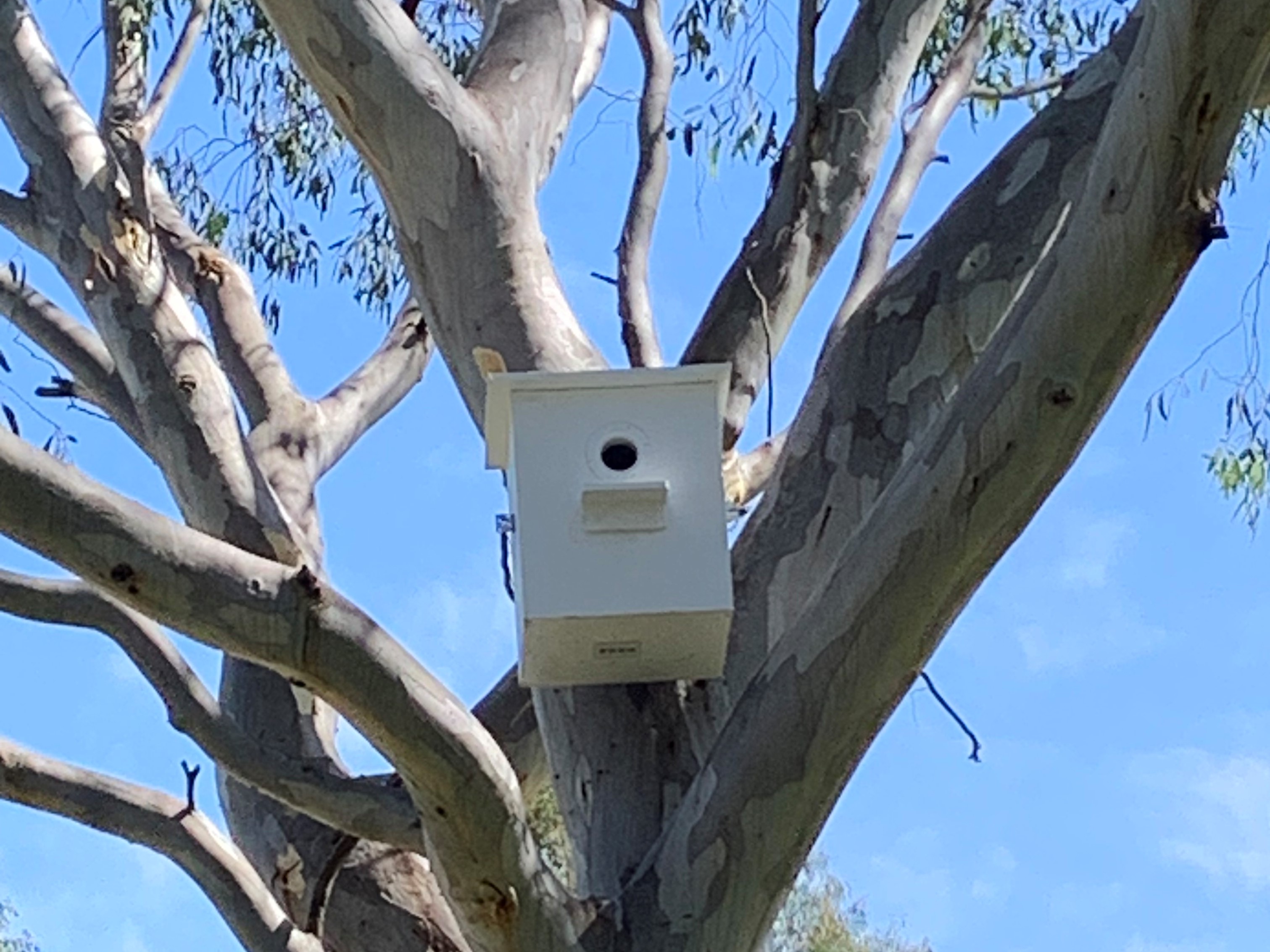Habitat recovery site provides new homes for fauna
11 Mar 2022
PRODUCTION ADVICE & NRM NEWS - MARCH 2022 - ENVIRONMENT
By Sophie Richards Senior Land Services Officer - Bushfire Recovery
P: 02 6051 2229 | M: 0436 407 398 | E: sophie.richards@lls.nsw.gov.au
These days there are many options for nest box design and manufactured hollow forming, so how can you be sure you’re making the right choice for your project site?
Following the 2019/20 bushfires, Murray Local Land Services has been undertaking a number of projects to support the post-fire recovery of flora and fauna by improving wildlife habitat condition. One of these projects was to provide new homes for fauna in a vegetation refuge around Woomargama. Habitat augmentation, in this case referring to artificial nest boxes and hollows, plays an important role in providing safe homes for fauna in areas where vegetation is too young to offer natural hollows.
This project allowed the demonstration of several habitat augmentation options to see how they would perform in our region. Murray Local Land Services partnered with Friends of Woomargama National Park, Holbrook Landcare Network and NSW National Parks and Wildlife Service to design and deliver and habitat augmentation demonstration site.
Hollowhog tool created hollows, Habitech nestboxes, insulated Thurgoona Men’s Shed nestboxes and chainsaw hollows were selected as the habitat augmentation options to demonstrate at the site.
To select the demonstration site, we looked for an established revegetation corridor connected with Woomargama National Park, which would provide suitable resources for fauna and an accessible site for maintenance and monitoring. Woomargama Common fit the requirements perfectly. The plantings are over 20 years old. Some small hollows are starting to form in larger trees: however, it will still be some time before a greater number and larger hollows form.
Holbrook Landcare Network hosted the demonstration day on Tuesday 15 February, and it was a great success.
Carl Tippler, Founding Director and Principal Ecologist at Habitat Innovations, commenced the demonstration component of the day by taking observers on the journey he and his partner Mick Callan went on in designing the Habitech nestbox. Habitech nestboxes are reinforced plastic moulded modules with internal timber and air barriers, providing optimal insulation. The installation process of a Habitech nestbox specifically designed for small birds, such as pardalotes, was then demonstrated. The addition of eucalyptus mulch before installation generates the humidity required for egg development.
Up next was the much-anticipated demonstration of the Hollowhog tool by Hollowhog inventor Matt Stephens. Matt spoke of the device’s limitless applications and how to use the tool to create hollows in suitable trees. The device can create an entrance and a larger hollow cavity within the tree. An entry modifier can create a smaller opening than the minimum size of the device, with the tree locking onto the modifier within one year.
Riverina Tree Care demonstrated nestbox installation, creating a chainsaw hollow and a hollowhog hollow. The Riverina Tree Care team impressed all attendees with their skilful tree climbing by a two-time Australian Tree Climbing Champion.
Even before the demonstration day, the Thurgoona Men’s Shed nest boxes were drawing a lot of interest and comments. These insulated nest boxes were designed based on Greater Glider nest box specifications from ANU and World Wildlife Fund. At first glance, the most obvious change is paint colour. ANU has found that by using reflective white paint the internal temperature of the box drops by up to 2 degrees. Reducing the temperature inside nest boxes is vital as temperatures above 30 degrees cause wildlife to move and function slower than usual. Anything we can do to reduce the internal temperature of a manufactured nest box is beneficial for wildlife survival and breeding. Internally an air layer and foil board insulation has been added to assist maintain optimal internal temperatures.
Thank you to:
- Woomargama Common Trust for allowing us to install this demonstration site at Woomargama Common,
- Friends of Woomargama National Park for supporting this activity and for the future monitoring of the site they have committed to,
- Dave Pearce from NSW National Parks and Wildlife Service for his support and
- Holbrook Landcare Network for their support, advice and hosting of this event.
The establishment of this habitat augmentation demonstration has provided many with new ideas and methods to explore. It’s now clear that every site is unique and the needs for each are different. Using a combination of habitat augmentation methods for future projects would be ideal. Each tree’s age, size, and position at the project site will determine what can be installed and where. When your next in Woomargama, pop down to the Common and see if you can spot the new homes created for fauna.
This project has been made possible thanks to funding from the Australian Government's Bushfire Recovery Program.
